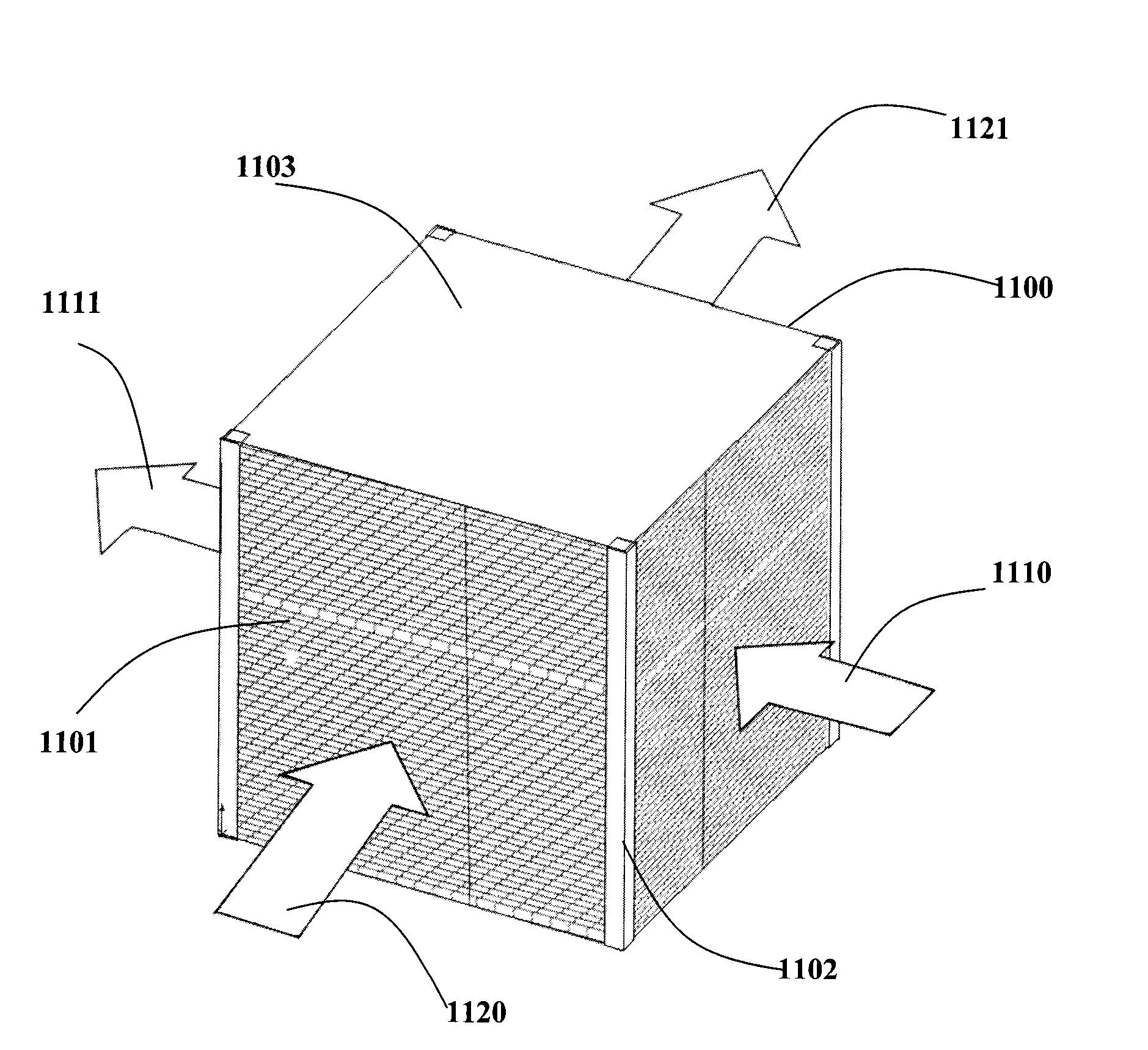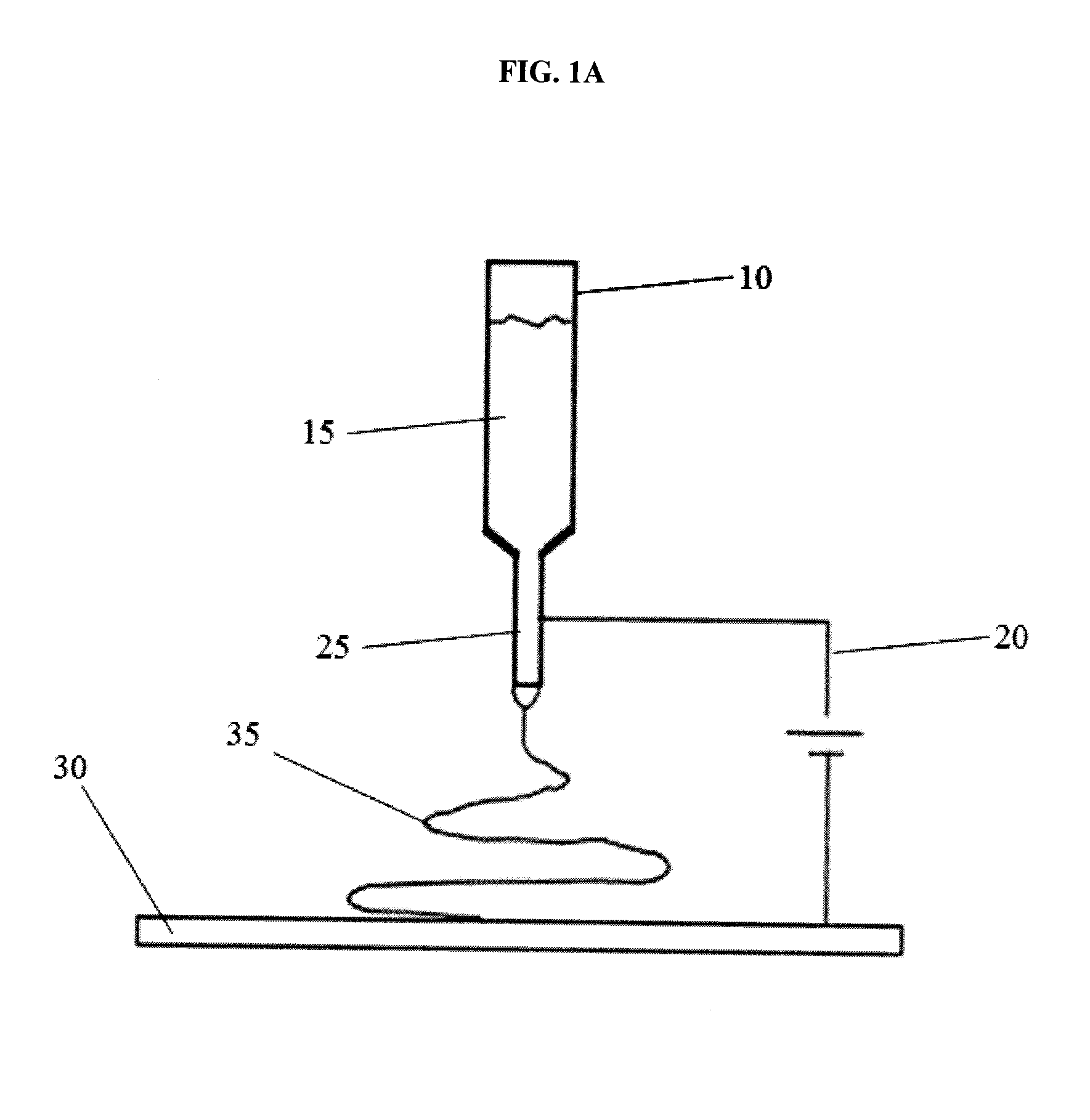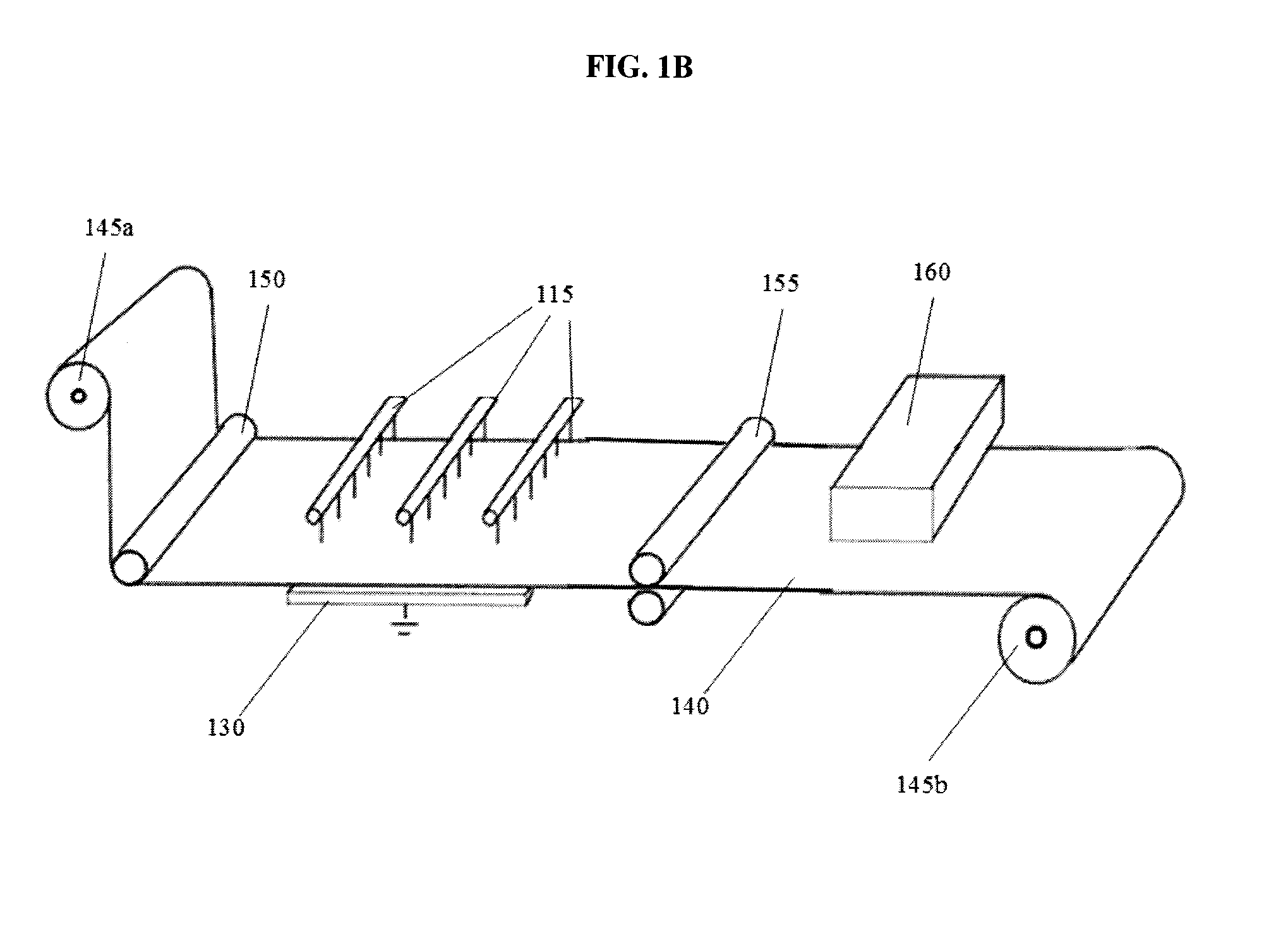Selective water vapour transport membranes comprising a nanofibrous layer and methods for making the same
a technology of selective water vapour and transport membrane, which is applied in the manufacture of textile/flexible products, domestic heating details, heat recovery systems, etc., can solve the problems of waste of energy, sickness, absenteeism and productivity loss, waste of useable energy, etc., and achieves high water vapour permeability, thin membrane, and low cost
- Summary
- Abstract
- Description
- Claims
- Application Information
AI Technical Summary
Benefits of technology
Problems solved by technology
Method used
Image
Examples
experimental examples
Example 1
Supported Nanofibrous Layers Compared to Known Microporous Substrates
[0114]Various microporous substrates were compared to uncoated, supported nanofibrous layers. A microporous polypropylene substrate was obtained from Celgard LLC, under the name Celgard 2500; the thickness was 25 micron, the average pore size was 0.204×0.054 micron (average dimension about 0.13 micron) and the porosity was 55%. A microporous silica-polyethylene membrane, was obtained from ENTEK International; the thickness was 191 micron, the average pore size was 0.065 micron, and the porosity was 63%.
[0115]A non-woven support layer, polyester non-woven (Reemay 2004 / 2006), 1 oz / sq. yd. was obtained from Fiberweb. Polyacrylonitrile (PAN) was obtained from Scientific Polymer Products with an average molecular weight of 150 000 g / mol. A solution of 10% weight PAN in dimethylformamide (DMF) was created under stirring at 70° C. The PAN solution was placed in a 10 mL syringe with an eighteen gauge hypodermic ne...
example 2
Coating of Supported PAN Nanofibrous Layers with PEO-PU
[0117]In order to make the supported nanofibrous materials selective, a dense polymer coating layer can be applied to the nanofibrous layer. Polyether-polyurethanes are known to be effective dense polymer layers, imparting high selectivity for water vapour over other gases, and offering high water vapour permeability. Polyacrylonitrile nanofibrous layers were electro-spun on to a polyester non-woven support layer in a method similar to that described in Example 1. The polyester non-woven (30 cm×80 cm) support was attached to a grounded collector target which was a rotating belt. The belt was rotated at a speed of 1.5 m / min. Nanofibrous mats were deposited on the non-woven supports at 3 levels of nanofibre loading—test results for the three samples are shown in TABLE 2. The porosity of all three samples is quite high—greater than 90% in the test performed.
TABLE 2SpinningThicknessPorositySampleTime (mins)(μm)(%)#2A608>90#2B9012>90...
example 3
Coating of Supported PAN Nanofibrous Layer with PFSA
[0121]Membranes comprising coated supported nanofibrous layers as fabricated in Example 3 demonstrated improved water vapour permeation performance over conventional membranes comprising coated microporous substrates, while maintaining sufficient selectivity. However, the water vapour permeance was considerably lower than that of the uncoated, supported nanofibrous layers described in Example 1. Decreasing the loading of the functional coating or increasing the water vapour permeability of the functional coating is thus desirable.
[0122]One method by which to increase the permeance of the final membrane would be to use a functional polymer with a higher water vapour permeability than the polyether-polyurethane polymers used in Example 3. There are many polymers with higher permeability than polyether-polyurethanes, as discussed above. Sulphonated polymers are one such class of polymers—many of these have high water vapour permeabili...
PUM
| Property | Measurement | Unit |
|---|---|---|
| Diameter | aaaaa | aaaaa |
| Nanoscale particle size | aaaaa | aaaaa |
| Thickness | aaaaa | aaaaa |
Abstract
Description
Claims
Application Information
 Login to View More
Login to View More - R&D
- Intellectual Property
- Life Sciences
- Materials
- Tech Scout
- Unparalleled Data Quality
- Higher Quality Content
- 60% Fewer Hallucinations
Browse by: Latest US Patents, China's latest patents, Technical Efficacy Thesaurus, Application Domain, Technology Topic, Popular Technical Reports.
© 2025 PatSnap. All rights reserved.Legal|Privacy policy|Modern Slavery Act Transparency Statement|Sitemap|About US| Contact US: help@patsnap.com



